

Matt Campbell
2026 Hyundai Tucson Hybrid review
15 Minutes Ago
The Lamborghini Urus Performante is the new pinnacle of high-performance SUVs – no ifs or buts.



Quickly see how this car stacks up against its competition. Select any benchmark to see more details.
Where expert car reviews meet expert car buying – CarExpert gives you trusted advice, personalised service and real savings on your next new car.
Upping the ante is what Lamborghini has always done best. It’s the very essence of the Raging Bull brand and the Urus Performante is just the latest incarnation of that spectacularly executed trademark formula.
When Lamborghini launched the Urus in 2018, no one had ever seen anything like it. Here was a genuine super sports SUV that didn’t just confuse the laws of physics as we know them, it practically re-wrote them, and in doing so kicked off an entirely new segment in the process.
It wasn’t just the Urus’s ballistic straight-line performance that mesmerised anyone who got behind the wheel (complete with bright-red weapons-hot lever), though it could surely stay with plenty of outright supercars in a straight-up drag race thanks to its four-paw driveline. On track, it was just as lethal, never mind the Lambo’s monster-size dimensions, high-riding profile and sheer unadulterated heft.
All of that didn’t seem to matter though, because it simply obliterated any-and-all dynamic barriers it was confronted with, thanks to a raft of innovative technical solutions designed to make the Urus handle like one of its genuine Lamborghini super-sports car siblings.

While the Urus was first and foremost an SUV boasting all the usual functionality expected of a family hauler of such mass, it was also one that gave the driver a genuine Lamborghini driving experience – especially in the handling, feedback and sound departments.
That is to say, it felt special in the same way a Huracan or an Aventador did every time you jumped into the pilot’s seat – no easy feat for a haughty family chariot stretching more than 5.1 metres in length and tipping the scales at more than 2200 kilograms. But somehow Lamborghini pulled it off and created something quite extraordinary and completely without rival.
All of this of course begs the question as to why the need to go full-tilt crazy and build an even more potent version of the lofty Lambo, armed with enough specialised firepower to pretty much own the skies, if we’re going with Lamborghini’s favoured aeronautical cabin theme.
And, just when you thought the limits had been reached, Lambo has added a ‘Rally’ mode, so you can do donuts outside the Hotel de Paris, in Monte Carlo.
Perhaps it was pressure from within the Volkswagen Group ranks – specifically, the hyper-quick (and significantly cheaper) Porsche Cayenne Turbo GT, or Aston Martin’s universally lauded DBX707 – a seriously good all-rounder we tried out earlier this year, in Italy of all places.

Closer still, is the newly revealed Urus S – a more accomplished ‘entry-level’ version boasting identical powertrain outputs as the Performante (490kW and 850Nm), but still a couple of tenths down in the 0-100 sprint.
Either way, there was never any doubt Lamborghini would once again, ‘up the ante’, and develop a more focused version of its already outrageous SUV – one that would effectively put any challengers firmly back in their box, regardless of how fast they are in a straight line.
You see, with the Performante, it’s not all about a few extra kilowatts, or knocking off a few tenths in a standing-start romp. In fact, I’d argue the Performante’s newfound blast-off speed simply puts it line ball with the Aston and Porsche, and by that fact alone, the least significant measure in its freshly honed, track-focused arsenal.
Far more notable was Lamborghini’s decision to scrap the Urus’s sophisticated air suspension system, which allows for variable ride heights and off-road modes, in favour of old-school steel springs and a lower ride height (by 20mm).
According to Victor Underberg, head of vehicle development at Lamborghini, there was never any doubt about dropping the air suspension given the benefits to the Performante’s handling and feedback far outweighed any loss of ride compliance on the road. Moreover, the lower stance also meant a lower centre of gravity was also achieved.

Still, it’s a bold move and one that’s bound to affect overall ride comfort as Underberg indicated. But like so many other high-priced, special edition variants these days, somehow ‘less becomes more’in these calculated equations.
There’s another big plus from using traditional springs and dampers in place of adjustable air springs – the Urus Performante is claimed to be considerably stiffer at both ends, making it more responsive and sharper overall, at least for those with enough free cash on hand to put one of these high-riders in the family shed.
It’s serious bucks, too. Try an eye-watering $465,876 before on-road costs, and that doesn’t include the long list of must-have options which could easily see its drive-away price blow out to more than half-a-million dollars.
Nevertheless, Lamborghini is betting on no shortage of willing customers with this kind of loose change lying around, given the overwhelming success of the Urus so far.
It’s easily the biggest-selling model in marque’s history, with more than 21,000 units sold in less than four years. But, it’s not just about the sales data either, the Urus continues to be a game changer by attracting up to 85 per cent of new buyers to the brand and one that’s currently responsible for more than half its global sales, which in 2021 numbered a record-breaking 8405 units.

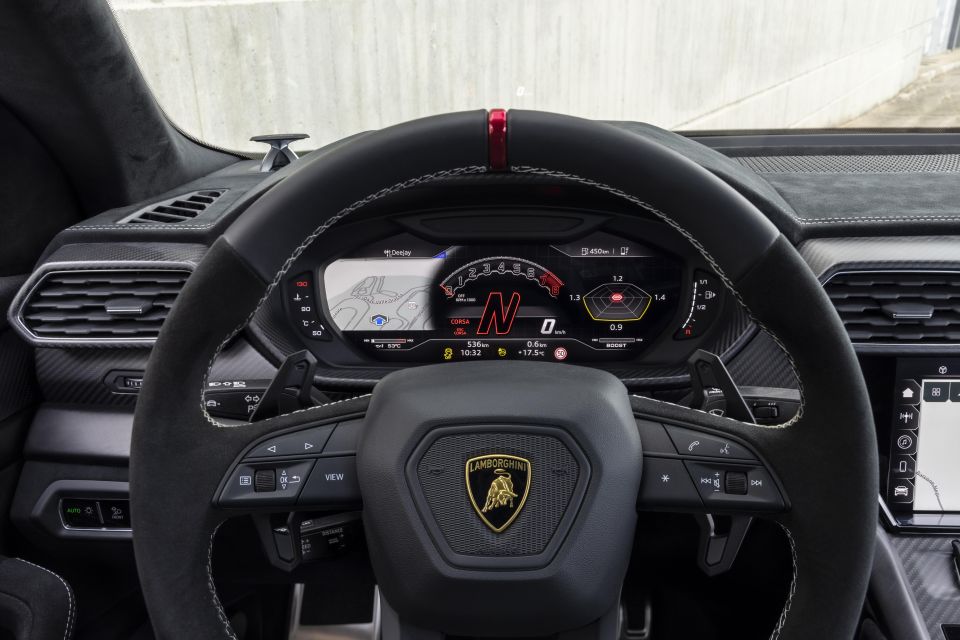

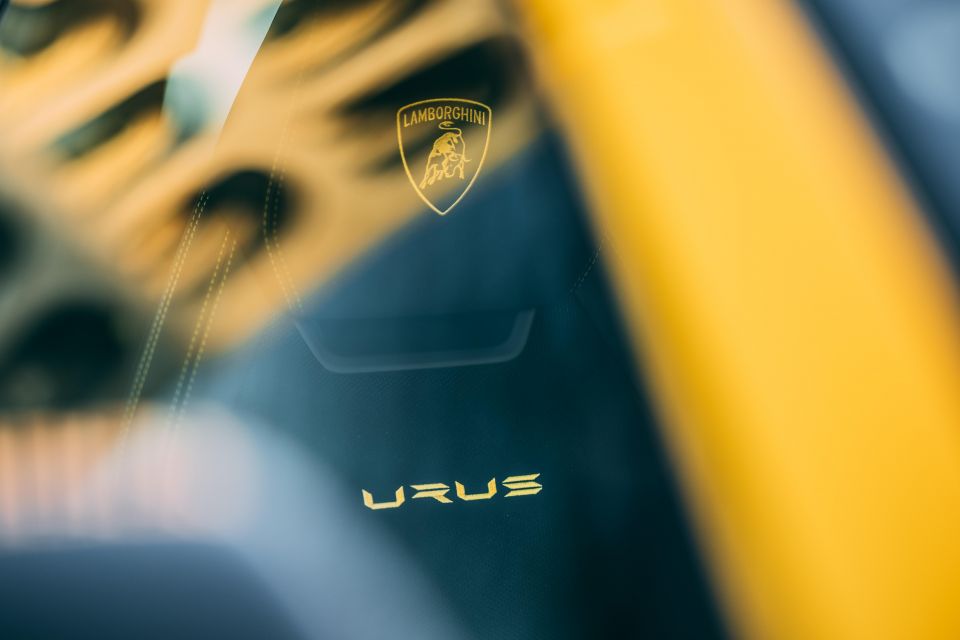
While it’s not a limited-edition, Urus Performante is a more finely-honed version. It’s a sharper instrument in every way – more planted and even more confidence inspiring thanks to a raft of ground-hugging and corner-carving measures like the wider track (by 16mm), and newly-developed Pirelli Trofeo R tyres for those who want to completely decimate the field on those premium track days.
There’s broader carbon-fibre wheel arches too – essential for housing the optional 23-inch wheels, or better-suited 22-inch lightweight versions that also boast featherweight titanium bolts.
The engineers have also cleaned up the front bumper too, with a new air curtain which you can genuinely feel the benefits of when you’re full tilt into the turn one kink here at Autodromo Vallelunga.
In fact, weight saving plays key role in this mental-as-anything Urus, where every kilo still counts, even for this lower, longer and wider leviathan, which manages to shed a not-insignificant 47kg, thanks in part to a suite of carbon-fibre composite panels – apparently more than any other production series SUV we’re told.
That’ll be the forged bonnet including air flutes, front and rear bumpers, splitters and spoilers; all of which are fashioned from the ultra-lightweight material and come standard with the Performante.

There’s a carbon-fibre roof available, too, but you’ll need to pay more for that. Oh, and that new rear wing also gets aircraft-style fins in the lightweight stuff, which as a whole, is said to increase rear downforce by as much as 38 per cent.
There’s more weight saving underneath with a titanium exhaust system supplied by the ubiquitous performance exhaust company, Akrapovic. That alone saves more than 10 kilos compared with the stainless steel version on the standard Urus.
Inside, it’s a bit more special than the norm, with swathes of Nero Cosmos (don’t you just love the Italian descriptions) Alcantara from floor to ceiling – primarily to cut down glare you might otherwise get off leather upholstery – at least on the dashboard.
There’s also unique trim on the doors, headliner and seatbacks, though there are a zillion ways owners can customise their Urus Performante through Lamborghini’s Ad Personam program. For instance, a couple of our testers had tasty red anodised aluminium door handles (you can get black too) that match the big red ‘Tamburo’ start/stop lever and the centre-strip on the steering wheel.
So, is this the new super sports SUV benchmark?
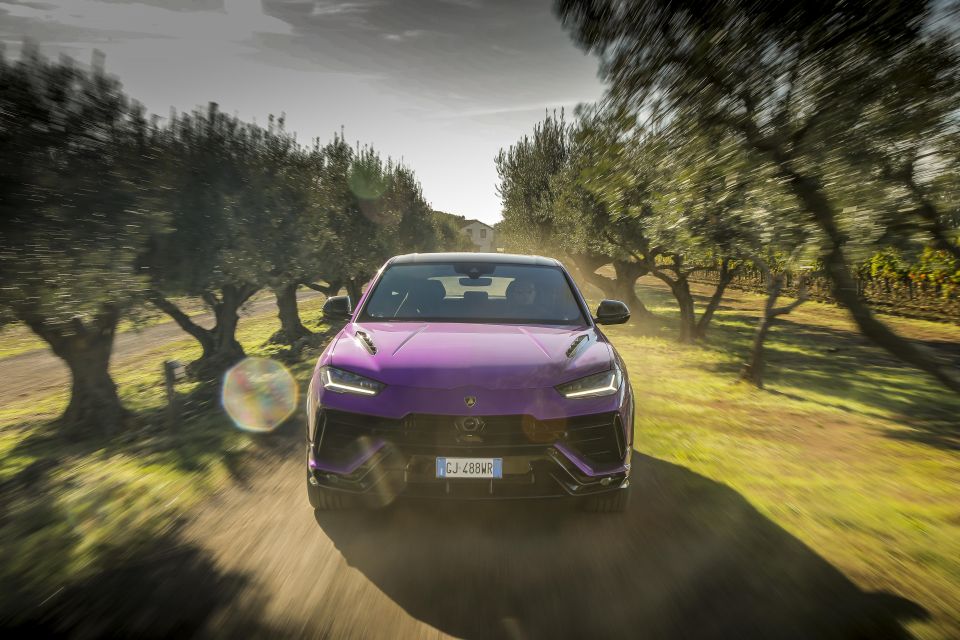
The range-topping Lamborghini Urus Performante is expected to go on sale locally in the second quarter of 2023 with an asking price of $465,876 plus on-road costs.
That’s a fair hike above the latest entry-level Urus S priced from $409,744 and arriving shortly – itself a slight bump from the $395,888 price of its predecessor.
I’d likely argue there are no genuine like-for-like rivals to match the on-track capability of the Urus Performante (we haven’t yet driven it on-road), but they’re a couple of blindingly quick high riders, including the Aston Martin DBX707 ($428,400) and Porsche Cayenne Turbo GT ($351,900) – the latter effectively a first cousin built off the same platform as the Lambo.
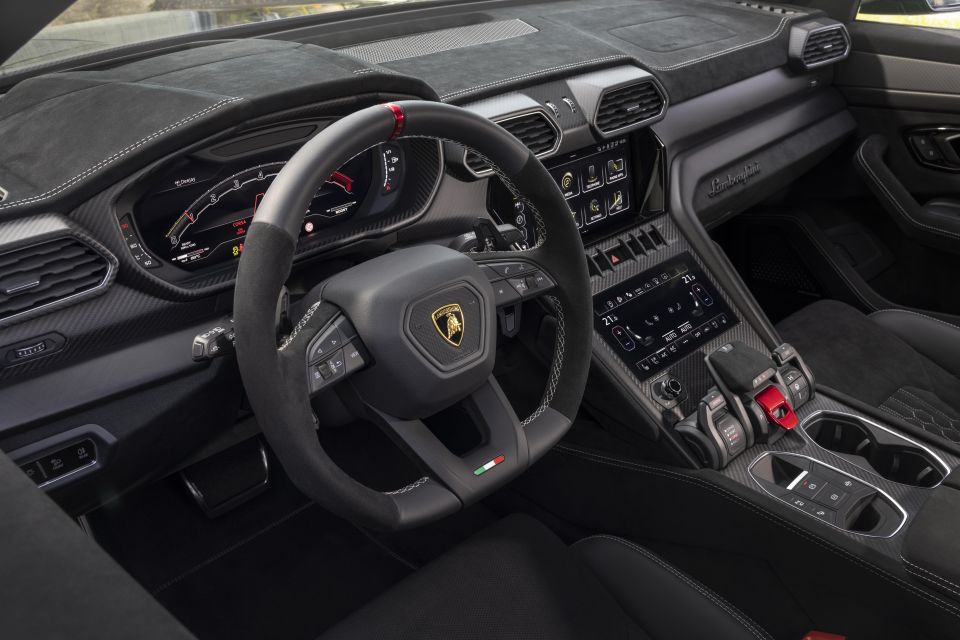
Buy your new car without the stress. It's fast, simple and completely free.

Great service from Travis and team, second time I have used this business would not hesitate to recommend them to anyone
Craig C.
Purchased a Ford Ranger in Sunshine Coast, QLD
CarExpert helped Craig save thousands on his Ford Ranger, now let us save you on your next new car.
Find a dealIt’s a good thing the Urus Performante comes standard with swathes of Nero Cosmos black Alcantara, because leather would simply be out of place in this oh-so-special Lamborghini SUV.
And it’s like no other Alcantara I’ve ever seen or sat on. It’s doubly thick and super-soft at the same time, with superbly cushioned sports buckets. The bolsters are tall and look aggressive, but they still offer easy ingress and egress, even when wearing a race helmet.
On the one hand the cockpit looks and feels like the dedicated track demon it is, but on the other it looks and feels more luxurious than you might expect of this hardcore Lambo.

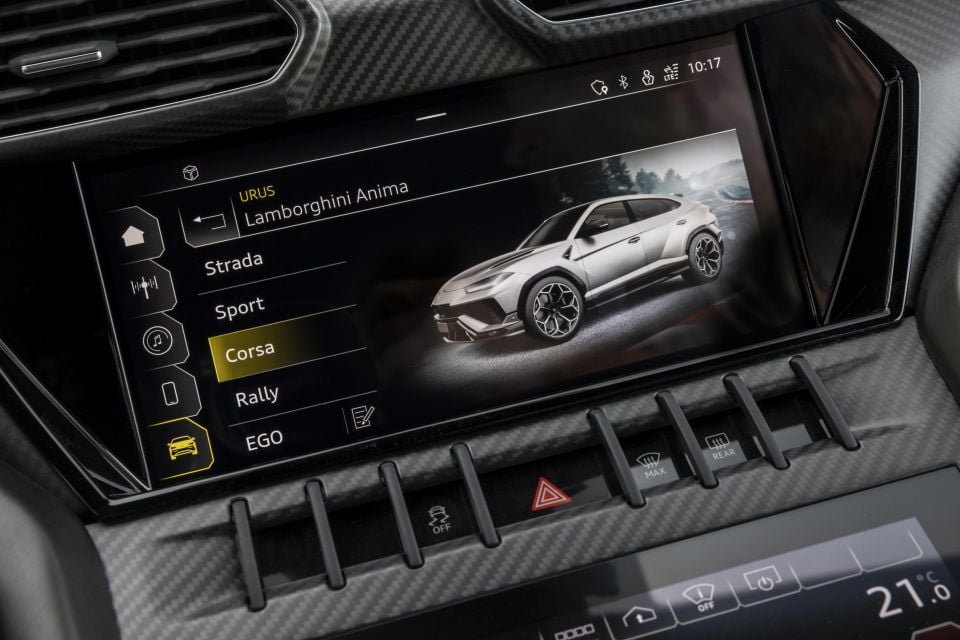

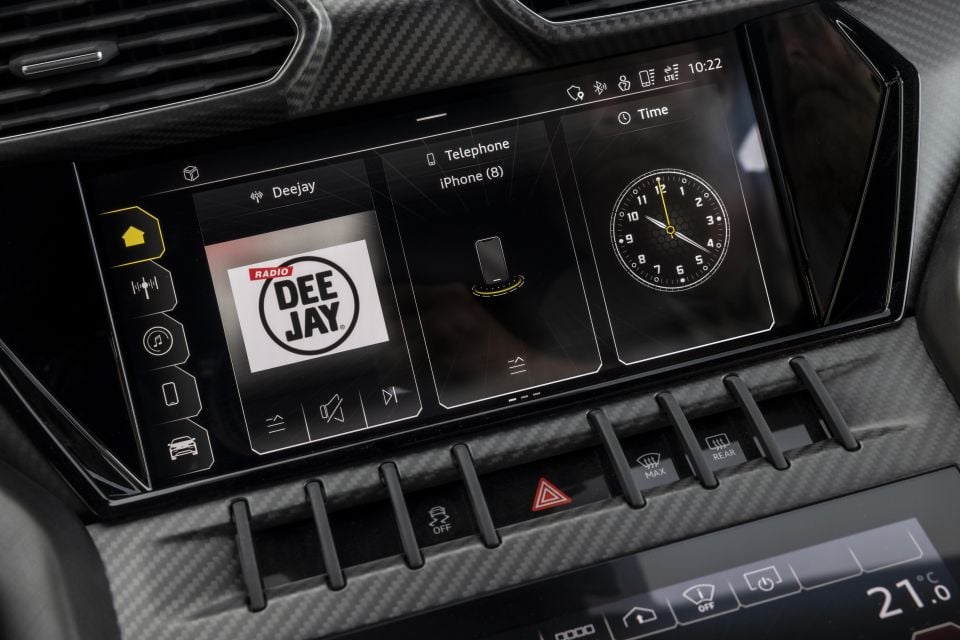
The steering wheel is something of an art piece – flat-bottomed and a combination of black Alcantara on the side rims and leather top and bottom.
It’s the perfect size – compact but not too so, with a red centre marker that matches what I like to call the red ‘fire control’ lever of the Urus’ central ‘Tamburo’ which houses the start/stop button and drive mode selector.
The overall look and feel is more technical than straight-up luxury, enhanced by lots of matte carbon-fibre trim. The ‘Tamburo’ itself uses two levers, one for the drive modes and the other for all-wheel drive system and various chassis settings. There’s a dedicated Manual button too flanked by a Park button and it’s all nicely intuitive.
As a track test only this time round, there wasn’t time to explore all three screens in the Urus Performante other than to enjoy the super-size digital driver’s display in the full-tilt Corsa (track) mode, with its colourful rev counter front and centre including even larger gear indicator – crucial if you’re shifting with the uniquely designed lightweight paddles.

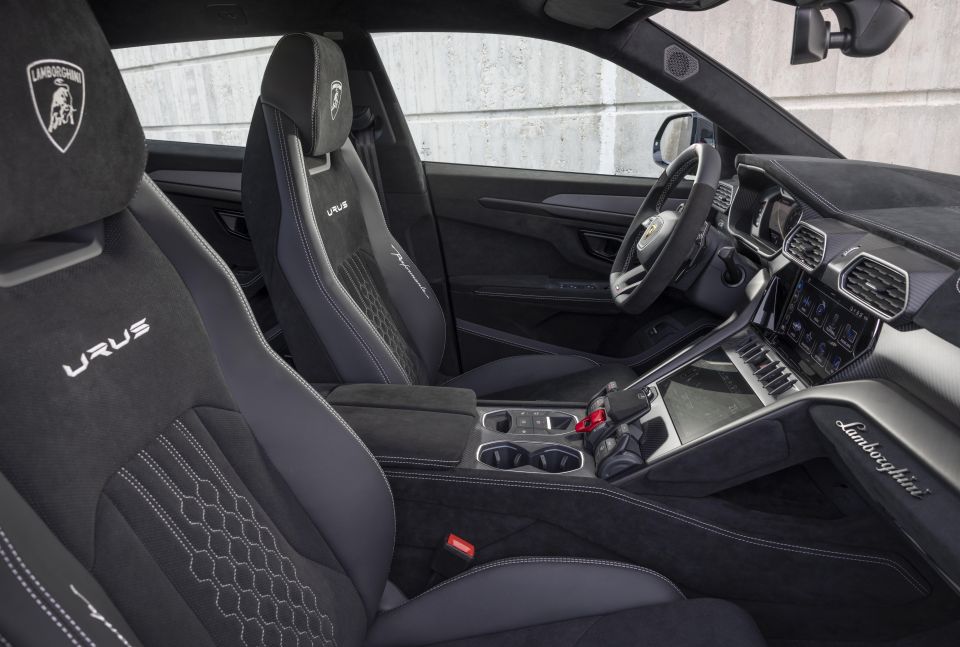
The driving position is simply superb and given the car is sitting 20mm lower compared with the regular Urus, it feels even better given you’re sitting that much closer to the ground. From the very moment you belt up and pull the right-hand paddle to engage first there’s an innate sense of confidence with the Performante. Everything just feels right.
While this was purely a track test, we didn’t get to spend any time in the rear seats (our tester was in a four-seat configuration rather than five), which effectively gives you bolstered rear seats and plenty of rear legroom.
Boot space is also decent at 616 litres behind the second row, and those seats fold pretty much flat for easy rear loading of luggage and/or sports equipment.

The Urus Performante gets a slight boost in power (12kW) to its 4.0-litre twin-turbocharged V8, to 490kW at 6000rpm, though the 850Nm of torque between 2300-4500rpm remains unchanged.
Interestingly, the power and torque outputs are now line-ball with the new entry-level Urus S, which has also had its fair share of tweaks and enhancements.
The power hike isn’t much, but combined with the Performante’s 47kg weight loss and best-in-class power-to-weight ratio, the big Lambo can scoot from 0-100km/h in 3.3 seconds (3.5s for the Urus S), with a top speed of 306km/h (up from 305km/h for the regular Urus).
This puts the Performante in-line with the DBX707 and Cayenne Turbo GT, at least in terms of sprint times.

More importantly, the Performante gets a few tweaks of its own, namely, a sharper throttle response and a more intense sound from its lightweight titanium exhaust, courtesy of performance pipe manufacturer, Akrapovic.
The Performante sticks with the eight-speed ZF automatic gearbox, but shift speed has been enhanced to make up for the absence of a quick-shifting dual-clutch transmission.
In addition, the ratio of the Torsen centre differential has been optimised down from 3.16 to 3.4 – commensurate with the Performante’s sharper responses.
The Urus Performante gets an 85-litre fuel tank, although fuel-consumption data has not yet been provided.

I vividly recall my first time in a Lamborghini Urus.
At full tilt it was utter madness. To think someone had a built a high-riding SUV as capable in the corners (or on track) as any full-blown supercar, simply blew my mind. Frankly, I doubt any other brand besides Lamborghini could have pulled it off – and that was in 2018.
It’s not that the Urus Performante is demonstrably better than the original in one area, but holistically, I doubt there will ever be a more capable high-end SUV powered by an internal combustion engine.
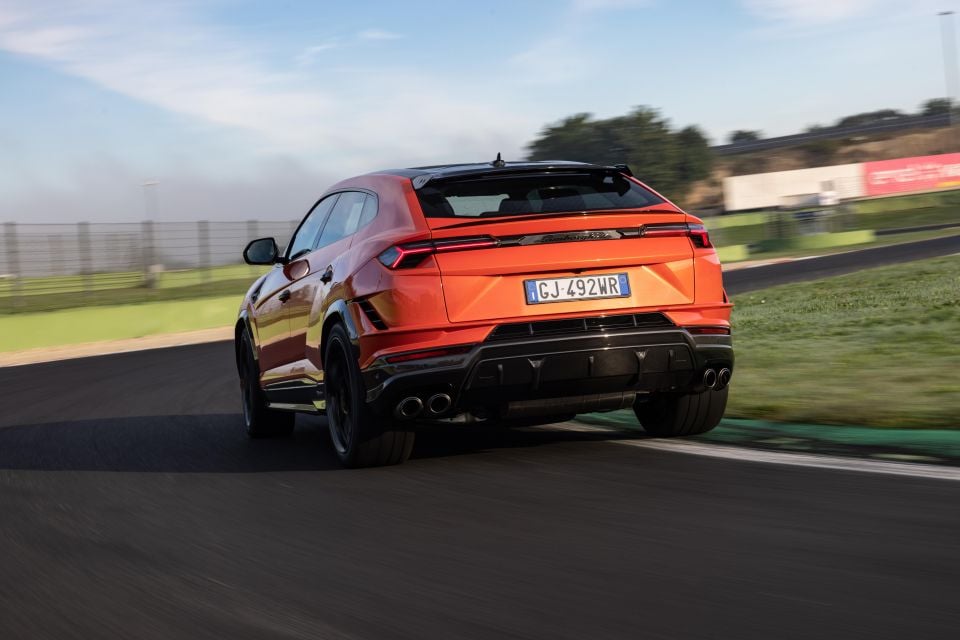
Where expert car reviews meet expert car buying – CarExpert gives you trusted advice, personalised service and real savings on your next new car.
I’ve never been much of a fan of aftermarket exhaust systems but from the moment you lift the red ‘Tamburo’ lever and hit the start button you’re going to relish the ear-splitting signature these pipes make.
It sets the tune of what’s in store on a track like Autodromo Vallelunga, which until now, I’d never gelled with. But that was in a Hyundai i30 N following a mis-matched set of drivers, and this is a Lamborghini Urus Performante following Italian racing driving Filippo Zadotti at full noise – there’s a big difference.
Filippo tells me we have three stints of four laps – the last lap of each a cool down. Music to my ears, given we could have flown half way around the world for four laps in total on a track I hadn’t seen in six years.

I kick off in Sport just for the first lap to get familiar with the track again, but hit the manual button, as it just feels wrong not to be manually shifting this track-honed Urus.
Immediately, you can feel the sharper throttle response and quicker steering (all-wheel steering) as we rifle down through a fast right/left section before dropping down to third for a banked right hander before getting back on the power.
It’s intoxicating how this 2150kg monster truck relishes being pushed hard in the bends. The moment you’re through it, you’re thinking “you can take that corner so much quicker”, and you do exactly that the next time around.
I can’t get over how well it balances it’s sheer heft and of course its 5.2m length. You just keep pushing harder with each lap you do, but you’re never quite satisfied. Still, the Performante seems to be relishing every input and then some.
In all three stints most of them in Corsa (track) mode, I don’t recall a single millimetre of body roll or momentary lack of grip from the monster-size 325/30 section Pirelli Trofeo R semi-slicks down back.
Understeer moments are rare, too, perhaps once on the left-hand hairpin – and only for a split second. Remarkable stuff and testament to the Performante’s active roll-stabilisation system that keeps the car in check no matter how high the loads.
The brakes are mental. Carbon-ceramic 440mm front rotors – meaning you can late brake into every corner without any consequences and then back on the power ever so quickly. Fade after 12 laps of relentless pushing – what fade?

Never mind the paddles either, the ZF eight-speed is more than up to the task. Several times I was too focused on my line and forgot to pull a gear and the auto took over to the point of set and forget. It’s very clever.
The Performante’s party trick is its new ‘Rally’ mode. It relaxes the safety settings and loosens the slip angles for some genuine fun on a makeshift rally section with Fillipo yelping like a wounded animal as we throw the Urus from left to right and back again.
How many owners will want to do that in their half-million-dollar SUV? Not many I suspect, but it’s a blast, nevertheless.
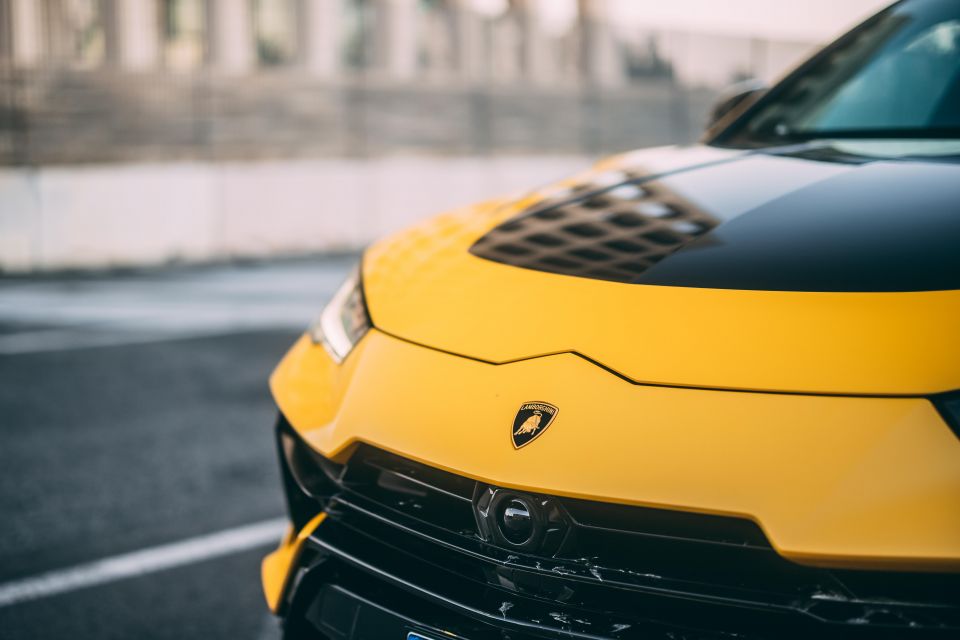


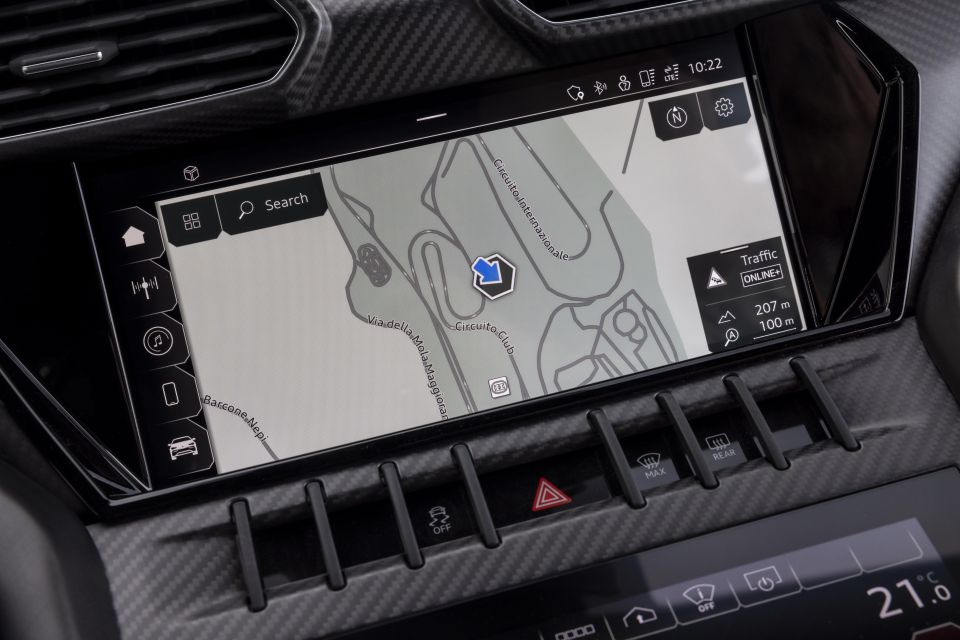
Like all super sports machines in this stratospheric price range regardless of the badge, it’s often difficult to know what’s actually standard fitment against an endless list of options – both inside and out.
Even with the highly specialised Urus Performante which gets more kit than the regular version in terms of go-fast hardware (and software), the lines between stock appointments, optional extras, and various levels of customisation via Lamborghini’s Ad Personam program are blurred at best.
Harder still, is the fact customer cars won’t arrive here until mid-2023 and almost all are guaranteed to be personalised in some fashion. It’s just what you do at this rarefied level of luxury car ownership.
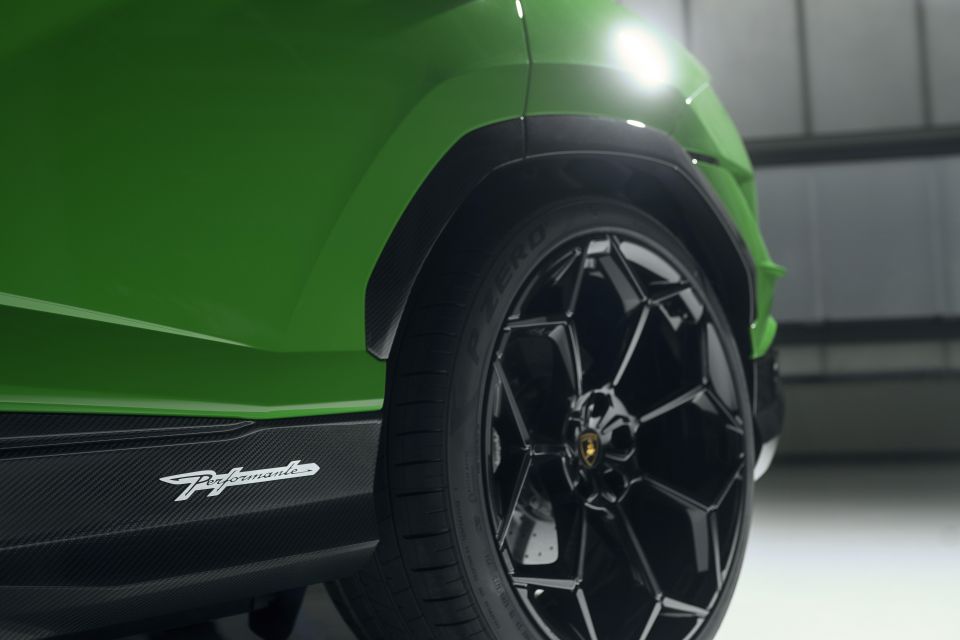
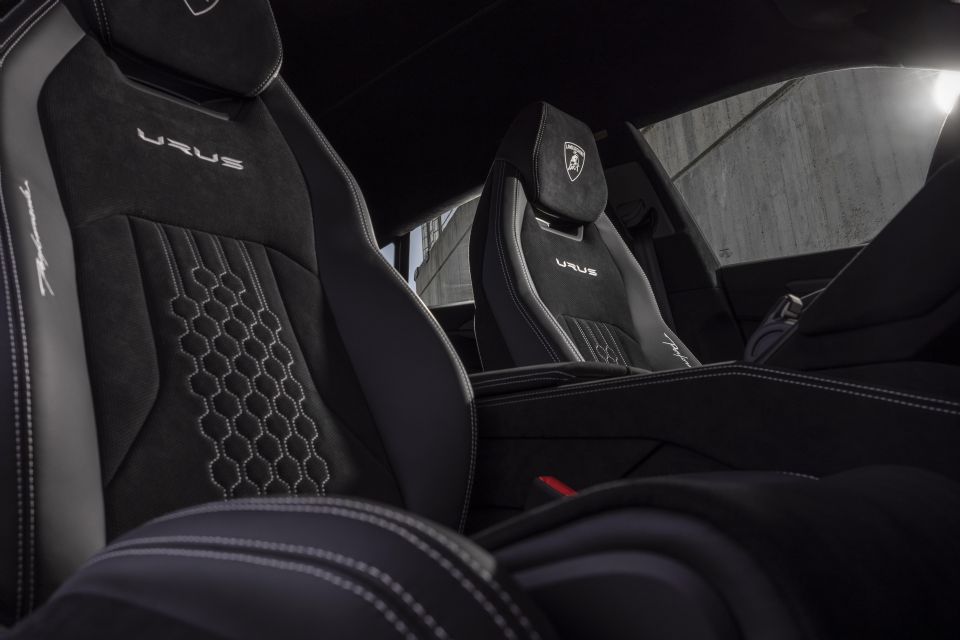
Nevertheless, standard kit includes:

Options include:

The Lamborghini Urus has not been tested by ANCAP or Euro NCAP.
As the car is based on the Volkswagen Group MLB Evo platform, it’s likely the five-star ANCAP result of the Audi Q8 is indicative of how the Urus would perform in a crash.
Standard safety equipment includes:

The Urus is backed by the same three-year, unlimited-kilometre warranty as the wider Lamborghini range, although fourth and fifth-year warranty extensions can be purchased.
Lamborghini doesn’t provide servicing costs for its cars, just in case you need to ask.
From experience, we can tell you to budget somewhere between $2500 and 4000 per service for the first few years, though buyers can purchase three and five-year service packages.

I can tell you first-hand the Aston Martin DBX707 is an astonishingly capable luxury SUV on the road, as is the Porsche Cayenne Turbo GT.
But they’re not in the same league, dynamically. At least, not on a race track. The Urus Performante can do things on a circuit that no SUV weighing 2150kg should be capable of, and certainly not at the pace we were moving at.
While we’re yet to experience the Performante (and its steel springs suspension setup) on the road, we suspect its whole vehicle makeover and newfound sharpness and roadholding will be nothing less than spectacular and equally addictive for anyone this well heeled.

Click the images for the full gallery
Where expert car reviews meet expert car buying – CarExpert gives you trusted advice, personalised service and real savings on your next new car.
Anthony Crawford is a CarExpert co-founder and senior presenter with 20+years in automotive journalism and content creation.


Matt Campbell
15 Minutes Ago


Max Davies
16 Hours Ago


William Stopford
16 Hours Ago


Derek Fung
17 Hours Ago


Max Davies
1 Day Ago


William Stopford
2 Days Ago